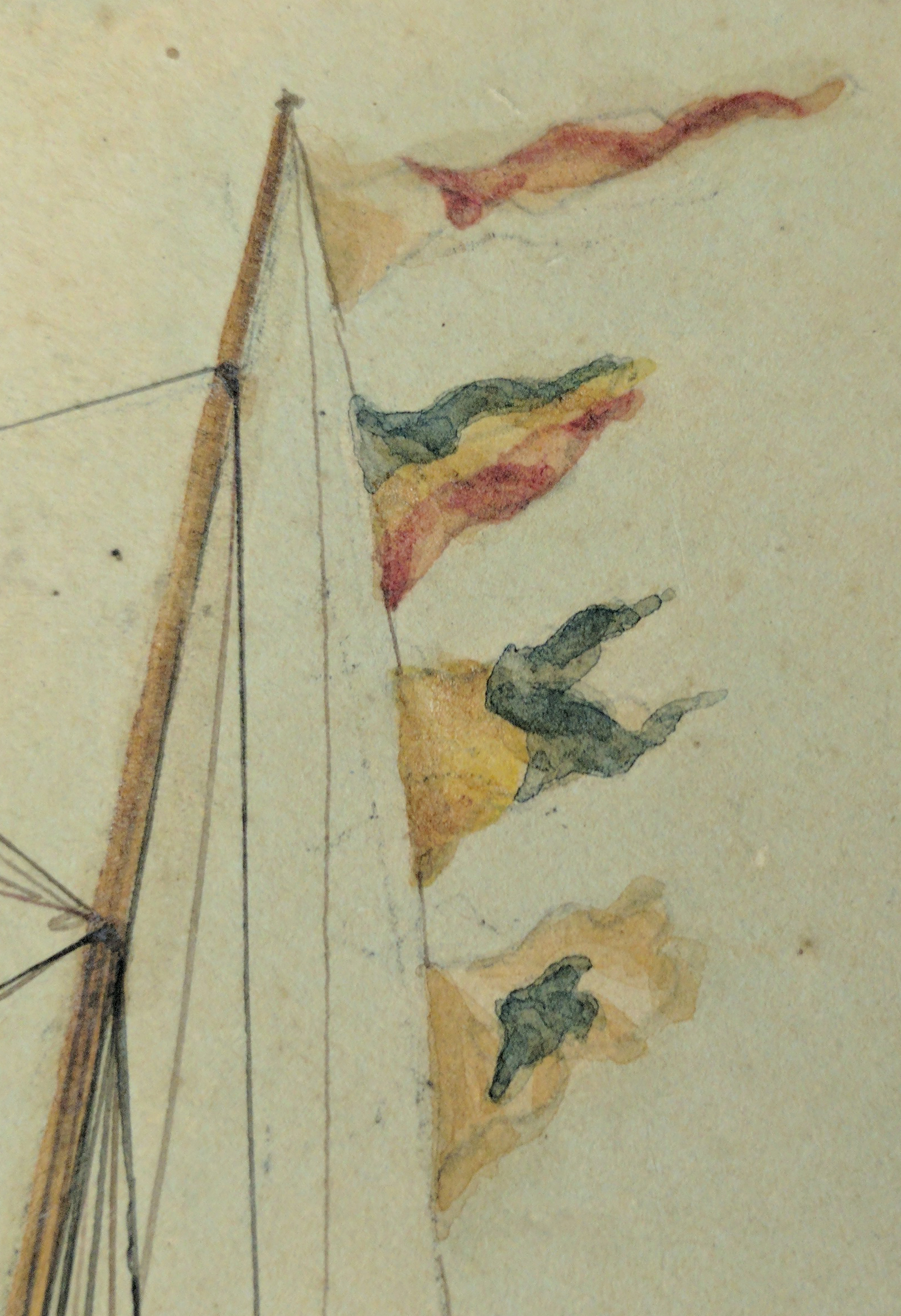Sometimes researching maritime art can be supremely frustrating but persistence is usually the key to unlocking an object’s story. This week I was contacted by a gentleman in South Africa who was interested in a watercolor in our collection by Mathieu-Antoine Roux. The image supposedly depicted a ship called “Alfred”. His ancestors immigrated to South Africa from Hamburg, Germany in 1859 and he was looking for an image that depicted the ship they had traveled on.
The watercolor showed a starboard broadside view of the ship under full sail. The artist very nicely depicted the vessel’s assigned Marryat code on the mizzen mast—the number ‘601’—as well as a house flag, a pennant with the name of the vessel, and a country flag on the stern. He also dated the watercolor (1859) and marked it so we had an idea of the region the ship was depicted in (Marseilles, so the ship was most likely in the Mediterranean).

Almost immediately alarm bells went off in my head because the name on the pennant wasn’t “Alfred” but “Alfredo” and the “O” had a little floopy thing (another one of my technical terms) on the bottom so it could also be interpreted as a “G” or “Q”. And the flag on the stern was difficult to interpret with horizontal stripes of yellow, blue and red which would indicate the ship was home ported in either Ecuador, Colombia or Venezuela (maybe in the 21st century this wouldn’t raise eyebrows but in 1859? really?). The flag was also missing attributes that would have definitively home ported the ship in one of those countries. The only other country that it might fit was Russia (or a Russian held country)—not that the top stripe on Russia’s flag is yellow, it’s white, but the paper was slightly yellowed so maybe we weren’t looking at paint but a work on paper that needs conservation.
Since the Marryat code is usually the dead giveaway for a vessel’s identification I checked Lloyd’s and not only could I not find a vessel that fit any of the names the pennant might indicate but the code “601” was assigned to a vessel called Ann Jones out of Plymouth, England.
So, a dead end…
Marryat code—wrong
Country flag on stern South American—extreme skepticism; Russian? Could be.
House flag with CF–unidentifiable
Ship in 1859 Lloyd’s? Nope. America Lloyd’s? Nope. Merchant vessels of the US? Desperation here but nope.

I let the man in South Africa know I couldn’t pin down the ship’s information and walked away. But walking away drives me crazy. A few days later I began searching again, but this time I had a breakthrough, mostly because of where I did a search and who was standing next to me when I did it. The publication I searched was the New York Marine Register of 1858. And there it was, a half brig (also called a hermaphrodite brig) named “Alfredo” whose home port was listed as “St. Michaels.” Chief curator Lyles Forbes was standing next to me at the time so I turned around and asked where the heck “St. Michaels” was—certainly not our St. Michaels in Calvert, Maryland with that strange flag on the stern? And he immediately responded with “it’s a Russian port” and everything immediately clicked.
I found a vessel with the right name, of the right type, the dates matched, the country matched, bingo…I was able to tell the guy in South Africa that our image definitely did not depict the ship he was looking for. The man’s response was priceless “I must congratulate you. You certainly don’t give up. I am so impressed. Pity I don’t have any other queries that need sorting as I am sure that you would get to the bottom of them too!”
While we don’t have all the answers yet—the 601 code being one and the house flag with the letters CF being the other—we have enough information to positively identify the vessel and that will do.
Does anybody know if there is a ship registry for Russian or European based vessels out there?


